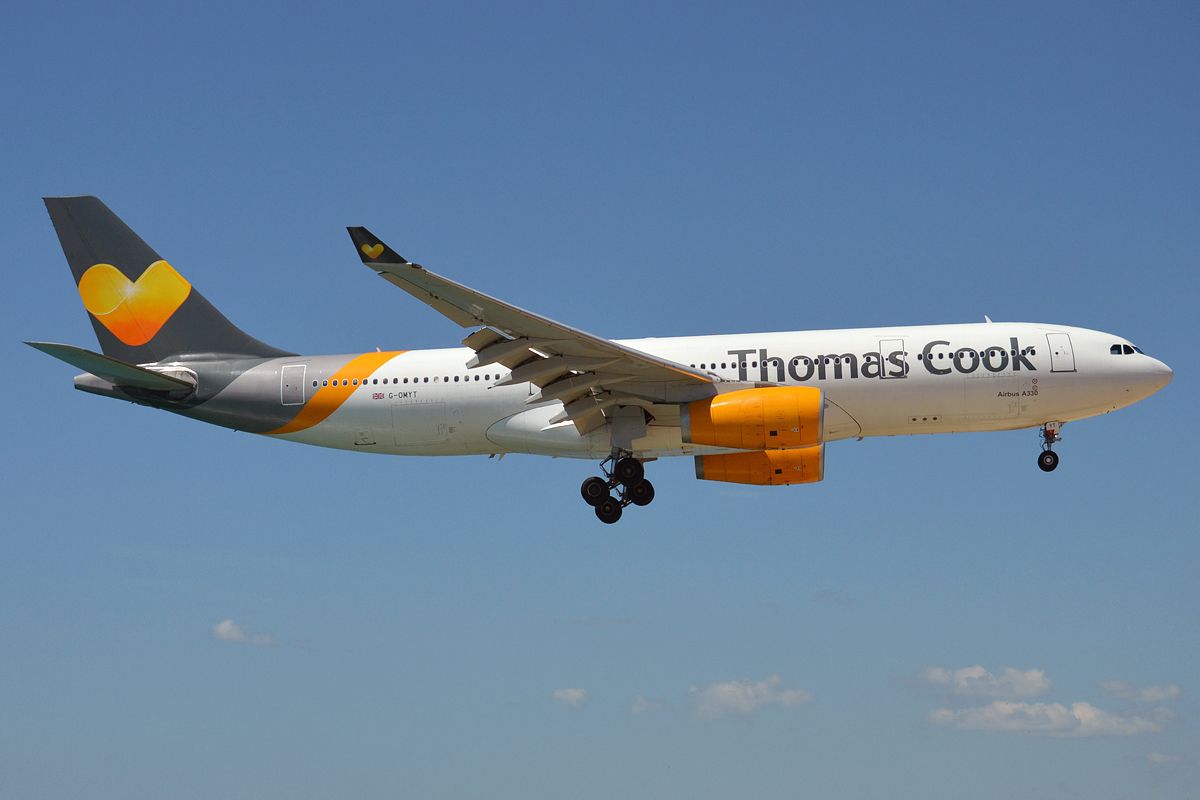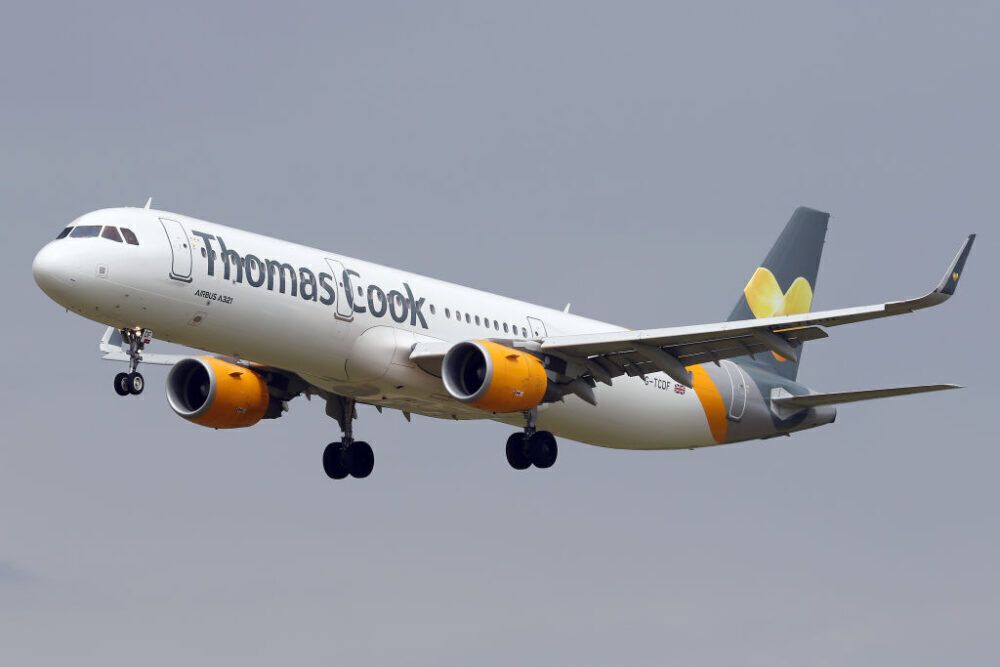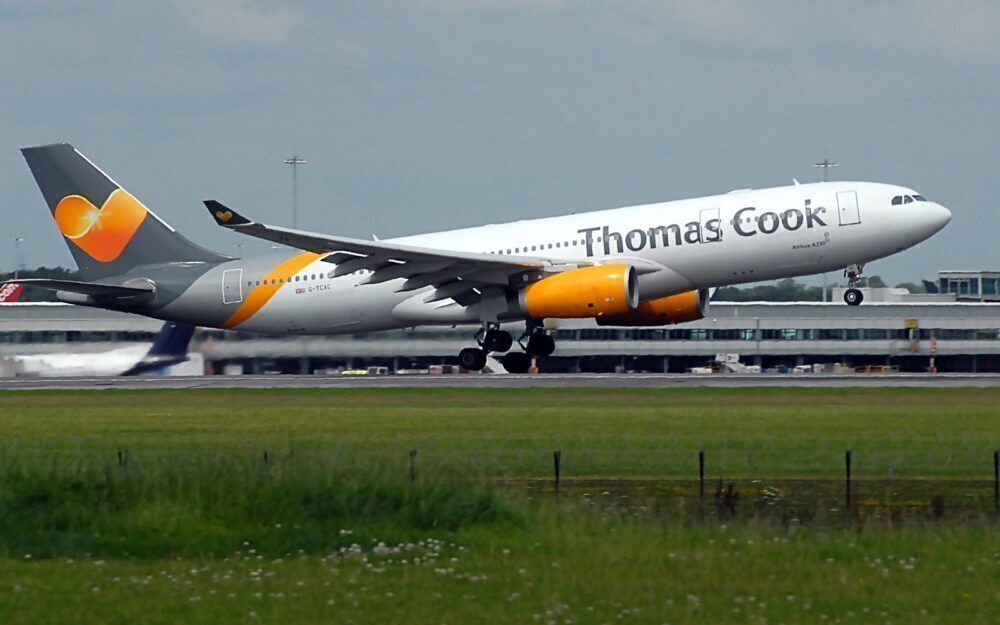UK-based Thomas Cook Airlines is one of several British leisure carriers to have ceased operations in the last few years. It began operations in 1999 under the name JMC, before becoming know as Thomas Cook Airlines following a rebrand in 2003. Over the years, its fleet grew through various acquisitions, including a merger with MyTravel Airways in 2008. But what became of its remaining aircraft after it folded in 2019? Let's take a look.
Thomas Cook's collapse
Thomas Cook's fall in 2019 was the culmination of a decade of financial issues. These began in 2009, when it issued a profit warning. The following year, its debts had grown from £249 million ($324 million) to £804 million ($1.05 billion). This figure reached £1.6 billion ($2.09 billion) in 2017, and the end was nigh. It remained operational for just two more years.
September 23rd, 2019 saw the carrier collapse, having reported its worst-ever half-year results the previous May. Thomas Cook Airlines' ongoing financial struggles ultimately forced it to declare bankruptcy, leaving 600,000 of its customers stranded abroad.
These passengers were eventually able to be repatriated by efforts like Operation Matterhorn. Data from ch-aviation.com shows that, at the time of the airline's collapse, its fleet consisted of 27 Airbus A321s and seven A330s. Let's see where these planes ended up.
Stay informed: Sign up for our daily and weekly aviation news digests.
Where did the A321s end up?
We'll start by examining the fates of Thomas Cook's most common aircraft at the time of its collapse, the Airbus A321. Its 27 examples made up nearly 80% of the carrier's fleet in September 2019. These stretched A320 family variants were densely configured to serve high-demand leisure routes, seating either 214 or 220 economy passengers.
Most of these planes returned to their lessors after Thomas Cook's collapse. These companies were Air Lease Corporation, Aviation Capital Group, Aviation PLC, Avolon, BBAM, Castlelake, Carlyle Aviation Partners, and ICBC. Certain examples went straight to other airlines, such as SmartLynx and Avion Express. Meanwhile, G-TCDZ has been scrapped.
The fates of the A330s
Scrapping was a fate that met three of Thomas Cook's widebody A330-200s after its collapse. These twin-aisle jets met this fate immediately after Thomas Cook went under: G-MDBD, G-MLJL, and G-OMYT. All of these procedures took place in Manchester in February 2021. These aircraft seated 49 premium economy and 273 economy passengers.
In the immediate aftermath of Thomas Cook's collapse, its remaining four A330s returned to Air Lease Corporation (one plane) and Aviation Capital Group (three). Some of these had slightly fewer seats than the scrapped examples. Their economy cabins featured 264, 265, or 273 seats. Meanwhile, the 49-seat premium economy section remained.
Three of these planes, whose ages range from 12 to 20 years, have flown other carriers since leaving. Two served Sunclass Airlines, the group's renamed Scandinavian subsidiary, during the 2019/20 winter season, but have since returned to storage. The final example, G-TCXD, has flown for Floridian cargo carrier National Airlines since March 2020.
Which of Thomas Cook's aircraft did you fly on during the airline's period of operation? Where did they take you? Let us know your thoughts and experiences in the comments.



